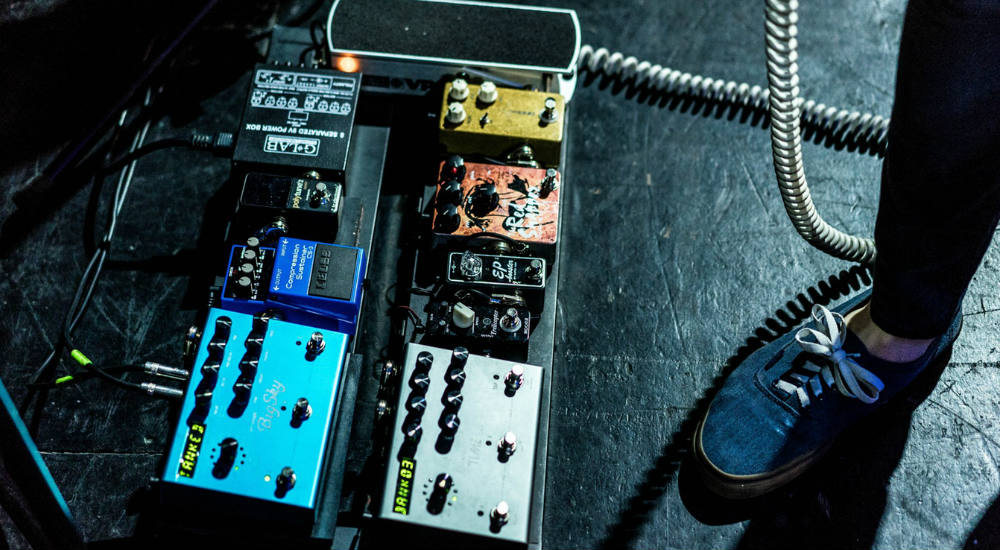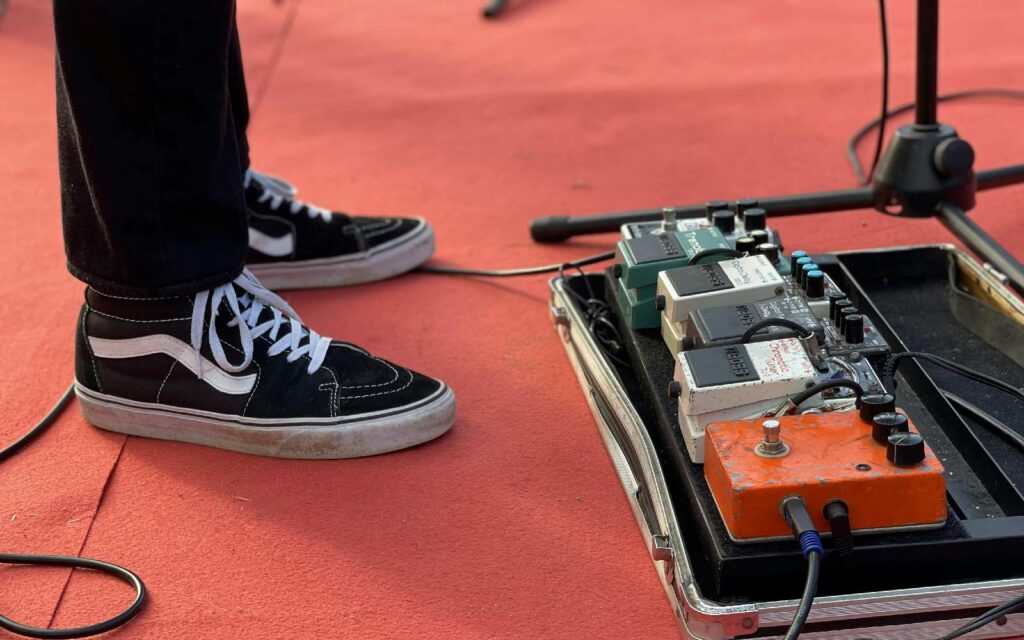Amplifier valves
If you want to go to Tone Town, you have to let your valves warm up before playing. You’ll hear a massive difference if you can leave your amp turned on for half an hour before playing. If you plug in and turn on immediately you won’t be getting the full sound of warmed up valves that sounded so good in rehearsal until the tail end of your set. Secondly, if you are gigging regularly with a valve amplifier, it’s a good idea to change the output valves every year. Valves will begin to wear after a while, resulting in loss of volume and occasional errant high frequency noises.
Understand your volume settings
Many won’t have realised that the volume pots on your guitar also act as a subtle low-pass filter, meaning that when you turn down the volume you also roll off some of the treble. This is by no means a problem, but it’s good to understand how that may be affecting your overall tone when you turn down during the quieter sections of your set.
Strings
Hate to be Captain Obvious here, but your string choice will drastically alter your guitar tone. Regardless of the gauge, the make of the strings is a tone-oriented decision. It’s fairly easy to get a consistent, medium tone from the round-wound nickel-plated steel strings produced by the major brands, however it’s also fun to experiment. Generally speaking, pure nickel strings will give a ‘rounder’ sound associated with vintage tones, while stainless steel strings are brighter and more aggressive, and flat-wound strings are mellower, with less treble emphasis resulting in a tone favoured by jazz musicians.
Power supply choice
Many of us have been guilty at one stage or another of carefully selecting the pedals that will help shape the sound we are after and then using a $12 power supply and daisy chain for the lot of them. Take a little time to check the different power requirements of your pedals, especially if you have second-hand pedals that were made for an overseas market, and get to know the difference between AC, DC and negative and positive polarity tips. Having one pedal in the chain that doesn’t match the power requirements can at best result in a loss of tone and introduce a 60-cycle hum, and at worst destroy your pedals. Using an isolated power supply will help ensure that your board doesn’t affect your sound adversely.
Remember to adjust the settings from rehearsal to stage
Again, this seems so simple, which is why it’s so easy to overlook. Of course you are going to set your pedals for what feels right during rehearsal, but remember to adjust them during soundcheck as each venue is different and you will need to react to that in order to sound your best. A large reverberant space will call for less delays and reverbs muddying up your tone, and similarly you will usually want less bass frequencies once you are playing at full volume with other instruments through a large PA.
Speaker choice
The type of speaker magnet used is one of the major factors affecting your sound, with ceramic and alnico being the most common. Alnico was once king and can be relied on for warm, 1960’s tone, whereas ceramic is much more common these days and delivers a cleaner and punchier sound.
Leads
The longer distance your signal has to travel the higher capacitance it will have, resulting in a loss of high frequencies. There are other factors that affect your tone when it comes to guitar leads, but assuming you are using good quality brands, capacitance is important to be aware of.
Picks
Picks are made from a variety of materials and each will result in a different tone. Softer materials, such as nylon, typically yield a softer attack and therefore a ‘rounder’ sound. Harder materials, like Tortex, on the other hand tend to be better at producing a brighter and more percussive attack.
Thinner picks, such as the .40-.60mm nylon range, will have a lighter sound well suited to acoustic strumming, while the .60-.80mm range produces a fuller sound, either for solo performers or rhythm guitar players as they are both stiff enough to accentuate individual notes with high-end bite, and flexible enough to still strum with.
If you’re a guitarist wanting to know how tonewood can affect your sound, read our Sound Advice column here.
Feature image via Abraham Osorio.







